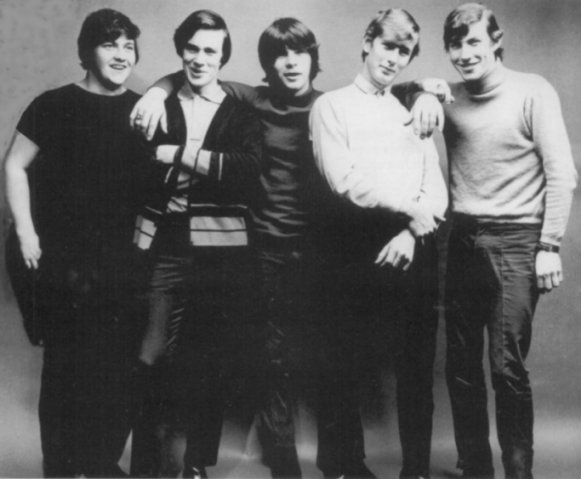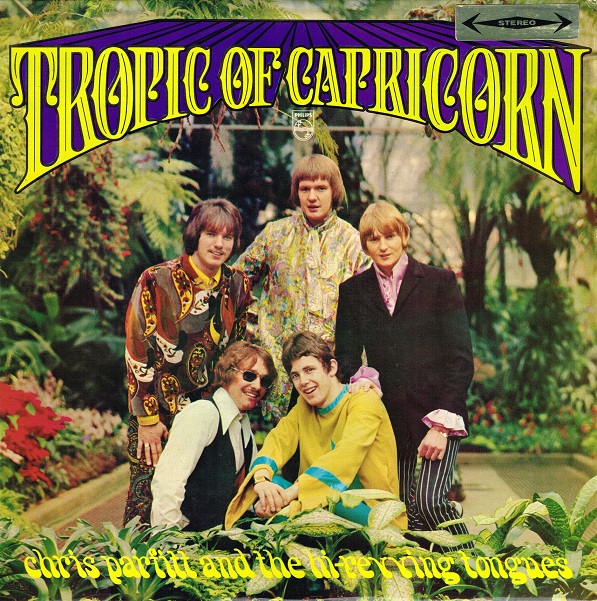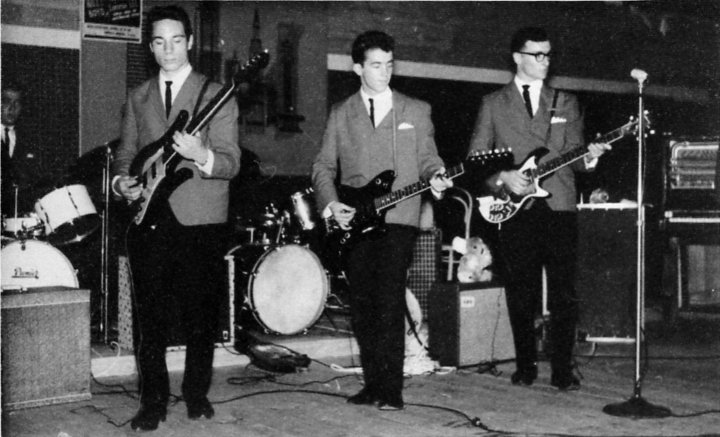THE STORY OF THE LIVING CHANNEL AND FOOD TV
On June 1st 2002 The Living Channel was launched on Sky Channel 8. FOOD TV was launched November 2005 on Sky Channel 9
This is the story behind the creation of these two successful television channels.
A memoir from John McCready

2000 had turned into the worst year of my life.
As Sky TV's Director of Programming and Marketing I was an integral part of a team that had successfully moved Sky’s offering from a few analogue channels into an exciting digital multi-channel service with subscriber numbers soaring. Around me were a fantastic team of people, particularly my top departmental heads, Travis Dunbar and Megan King; I had at least three exciting programme buying trips to Cannes and LA each year and I was well remunerated.
Others looking at me probably saw a successful and happy guy. However, all of my adult life I had been prone to depressions, but none like the one I was in now and which had been with me for several months. A depression so deep I felt I was in a huge black hole with no light and no future. Only my wife JT was aware of my state.
I had to get out of Sky to save myself. So at 60 years of age and with little backup cash to assist a transition to a new job or career, I resigned. When I told Sky CEO Nate Smith my decision and of my depression he was totally surprised and, like all my immediate work colleagues, just had no idea this was going on with me; apparently to the world at large my depression was well hidden.
Nate Smith decided that should I recover from my depressive state he didn’t want me free and available to be hired by opposition companies, so he offered me a two-year deal (at about half my then salary) to stay out of the TV job market in New Zealand and consult to Sky. In doing this Nate not only enabled JT and I to survive financially but had also given me the time and opportunity to address my condition without stress.
JT and I lived in an apartment in York Street, Parnell and it was there I set up office. Whilst I was on call to Nate for any advice he needed, the reality was I had very little work to do. I was simply being paid not to work for the opposition. My time in the office was little and time on the golf course, a lot.
After a while my conscience got the better of me and I felt guilty receiving Sky’s money for not actually working; this got me motivated to seriously research ideas for new channel formats and to make presentations of these to Nate. Additionally, Sky had decided to start a Pay Per View (PPV) movie service and I was given the job of programming the monthly schedules. I was now reasonably busy with genuine work, but not too busy that I couldn’t still get in a few games of golf weekly.


On looking at available channel formats I noticed that doing well for Foxtel in Australia was LIFESTYLE and among the top cable channels in the USA were HOME AND GARDEN CHANNEL and FOOD CHANNEL. The content on these channels were primarily Housing, Home, Garden, Cooking, Design and DIY. On looking at the top rated shows each week on the major TV networks in Australia and New Zealand, nearly half the programmes were in this “lifestyle” genre. Home design and real estate are among my hobby passions so it seemed to me “lifestyle” was a format that could make a successful channel for Sky.
My wife JT is an enthusiast for food, cooking and health, all programming genres that would appeal to women: she had been encouraging me for sometime to look at starting a radio station that would have “lifestyle” as its core format. JT and I were in agreement that a “lifestyle” TV channel on Sky could be a real winner.
The idea for this type of channel was presented to the Sky programming team; they also saw its possibilities and agreed to add the genre to their short list to be considered for the next introduction of new channels.
OUR FINANCES: A MIRACLE IS NEEDED
It was now mid 2001 and my Sky consultancy had been going for about a year. Whilst my new lowered income was enough to pay our mortgage and for us to live well, JT and I were concerned. Retirement age for me was certainly in this decade and we were not sufficiently cashed up to afford to retire. For the first time in my life I was forced to step back, take a good look at our financial position and to evaluate what would be needed for us to continue enjoying somewhere near the standard of living we had grown used to.
Money, even though we were never short of it, was not something I ever thought about or worked for. I had always taken a task or company appointment because of my interest and love for the product and because it was something that I wanted to do; monetary reward came as a result of success. Likewise I was not careful with our earnings and, if we had the cash, I spent on what I desired. So now at 61 this was a serious issue.
To sum up our financial position, a miracle was needed.
Getting another highly paid corporate position would not suffice as our equity in our home was only a third of its cost and we had very little cash in the bank. We needed to start a business of our own, a business that we could grow and eventually sell at a good capital gain.
JT: “LET’S DO A LIFESTYLE CHANNEL OURSELVES”
JT came up with the solution. “Let’s do a lifestyle TV Channel ourselves”.
With our enthusiasm for this genre and our knowledge of the TV business (JT had worked in production and sales) this was something we would love to create and manage. I started researching programme availability and prices plus the costs of technically creating such a channel and providing it to Sky. It was soon very obvious that the capital needed was beyond what we had or could raise. We decided to pitch our proposal to Sky anyway and if we were fortunate enough to get a contract, then worry about raising money.

Months went by and late 2001 we were advised that Sky were about to make a decision on what new channels they would add for 2002. We waited anxiously.

SKY DECIDE
In the last working week of 2001 I received a phone call from Megan King. Sky had decided to go with our proposal and wanted the channel created and on screen before mid 2002. It was now up to me to negotiate a monetary deal with Megan: if that was successful we were “GO”.
Sky executives were extremely brave to take a risk on a yet to be produced local channel when they could easily have taken the safer option of bringing in Lifestyle Channel from Australia.
The formula for making a profit on providing Sky with a channel was simple; just make sure your income from Sky plus any revenue from advertising (which we would sell) was higher than the combined costs of programming, staff and producing the channel to deliver to Sky. The negotiation with Megan King on the fee Sky would pay us to provide the channel was absolutely critical.
The way it works is that you get x cents per Sky subscriber per month. If x is too low you go broke. Megan had worked with me as my business manager at Sky and we had been a great team in keeping Sky’s programme costs controlled; she had been a tough negotiator previously on my behalf and Megan now turned out to be a real tough negotiator on the other side of the table.

Where it all began; our home office York Street, Parnell
That was the good news. The bad news was we had little cash and no idea how to physically provide and deliver the channel or how much it would really cost. Creating the channel brand, imagery and programming would be normal work for me; however, the technical side and costs was an area of television in which I was at best, a novice. For my negotiations with Sky I had done a “best guess” on these costs.

Greg Heathcote, Touchdown/Eyeworks Head of Television
NEW PARTNERS AND A CASH INJECTION

“LIFESTYLE CHANNEL” TO “LIVING CHANNEL”
LIFESTYLE then informed us they had now registered their logo in New Zealand as a trademark and advised that we would have a problem getting any Lifestyle TV logo registered. Our trademark lawyer agreed with them. Bugger them I thought. We came up with The Living Channel as an alternative name and quickly changed our company registration.
To me the design of a company logo is all-important and like the design of the 89FM logo years ago I would be a difficult client for the designers and micro manage the task until I was completely satisfied with the result. In the end Steve Thomson at BRANDSPANK came up with a logo I really liked and I had it trademarked just as fast as the system would allow.

The New Zealand Dollar had fallen back in recent times against the UK Pound and the US Dollar, so where possible I did our deals with payment in Australian Dollars. However, as many important distributors would only work in UK Pounds and US Dollars, my budgeting was conservative and took in account the worst possible exchange rate scenario.
PROGRAMME BUYING
I began a series of tough negotiations with programme distributers. Not only was our proposed price per hour probably a record low, I was seeking payment terms of no deposit up front and four quarterly payments from the license start date. In other words I was seeking the distributors to give us credit and they wouldn’t get full payment for a show until a year after the contract start date.
With about seven weeks before our first schedule was due at Sky for inclusion in Skywatch magazine I just had to get my negotiations for our first programming concluded. It was here that my experience over the past 10 years of being Director of Programmes at TVNZ, Director of Programmes at Sky and VP Programming for the SBS group in Europe, paid off.

A wonderful thing for me was being able to bring to New Zealand Television specialist programmes that had never been seen on any other channel. Programmes about quilting, knitting, scrapbooks, yoga and serious home design and renovation shows.

Claudia Gunn, Promotions and Jacob Slack, Touchdown Graphics
As a former music man, organising the composing and production of music themes for the channel ID’s and generic channel promotions was something that was a real pleasure for me. I did most of the work with North Shore based composer/producer Dean Kerr, who met my brief perfectly.
THE LIVING CHANNEL IS LAUNCHED
Two weeks from launch date things started to come together; we had master tapes for the launch programming, converted them to digital and were testing the play-out server. On screen promotions were being made and channel imagery, with music, completed. The server was driven by software, which Greg had organised, but all data input was manual, as was the placement of advertising and promotions in the schedule.

JULIE AND JOHN DISAGREE
AN IMPORTANT DECISION IS MADE
However, we getting only a little revenue from advertising. We had employed a full time sales representative and despite his good credentials and plenty of effort he was not successful. JT simultaneously was doing wonders with some major companies and getting competition prizes of big value. These viewer competitions were bringing in higher channel participation and assisting in growing viewing numbers. The suppliers of prizes (F&P among them) were excited about the exposure they were getting for their products.

The Living Channel SMART CAR
WE CONTRACT POPULAR BRITISH PROGRAMMES

Sarah Beeny, Property Ladder

Kevin McCloud, Grand Designs
GRAND DESIGNS was one that nearly got away. Tony Iffland, who managed UKTV in Australia and New Zealand, had made an offer to distributors Freemantle before I did. Paul Ridley, the Freemantle boss and formally my programme buyer at TVNZ, was in a dilemma. Like me, Paul believed the programme was more in Living’s genre than UKTV’s but Tony wanted it badly, had made the first offer and Paul’s company were part owners of UKTV. After I had appealed to Paul, Tony and my Sky contacts, Tony was unbending and insisted the show went to UKTV. Sky CEO John Fellet was called in to adjudicate and made the decision that the show sat more comfortably on Living.
BBC had one of the best range of food and lifestyle programmes and commanded high prices. Initially we could only afford to purchase absolutely essential shows from them. Now the more favourable exchange rates allowed us to increase our buying from them and over time BBC became one of our top three suppliers. David Vine, the BBC Manager for Asia Pacific and Julie Dowding, his New Zealand representative, were terrific people and gave us excellent service.

TIME TO LOOK TO THE FUTURE
The Living Channel had entered a new phase.

Food programming was one of our most popular programming genres and stand-alone Food Channels were successful in the UK, USA, Canada and more recently Australia. I believed there were enough excellent non-food programmes to broaden The Living Channel and continue its success and that there were sufficient good food programmes available to make a dedicated channel viable. JT and I agreed we needed a Food Channel.
THE HARDEST TWO MONTHS EVER
I needed the button number decided urgently for our promotions, but just didn’t want to accept what looked like being Sky’s decision to place us in the no-zone. At the very last moment, near our promotion absolute deadline, I got the good news; Travis Dunbar, Sky Programme Director, had pulled some weight and we were given button 9. This was huge for us and I’m forever grateful and believe it gave Food TV an excellent initial and on-going audience exposure: additionally we were able to cross promote Living and Food as sister channels sitting side by side on 8 and 9.


It was obvious that the decision to spin off food programming as a stand alone channel had been the right one and Food TV filled a void in Sky’s channel offering.
The business was now making a profit and paid a dividend to shareholders.
TIME TO EXIT

I no longer suffer depression.
















